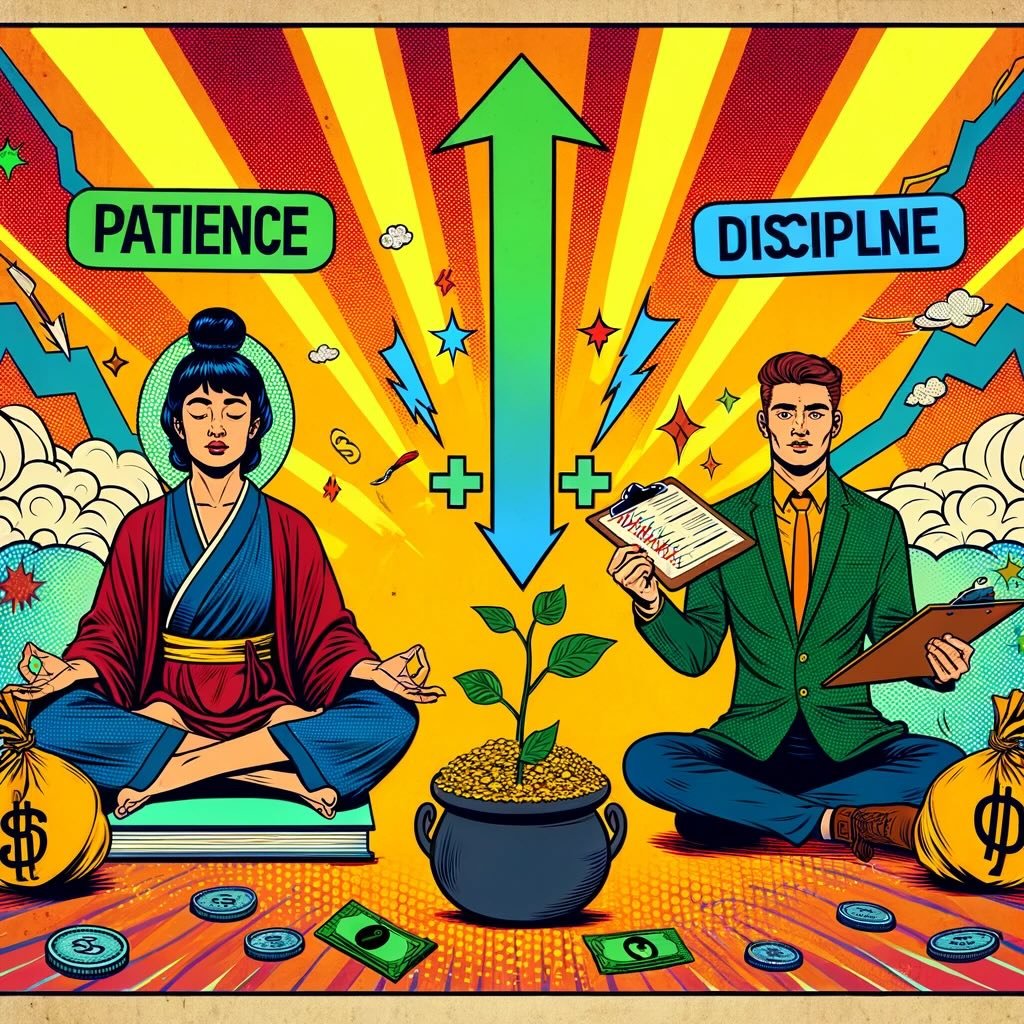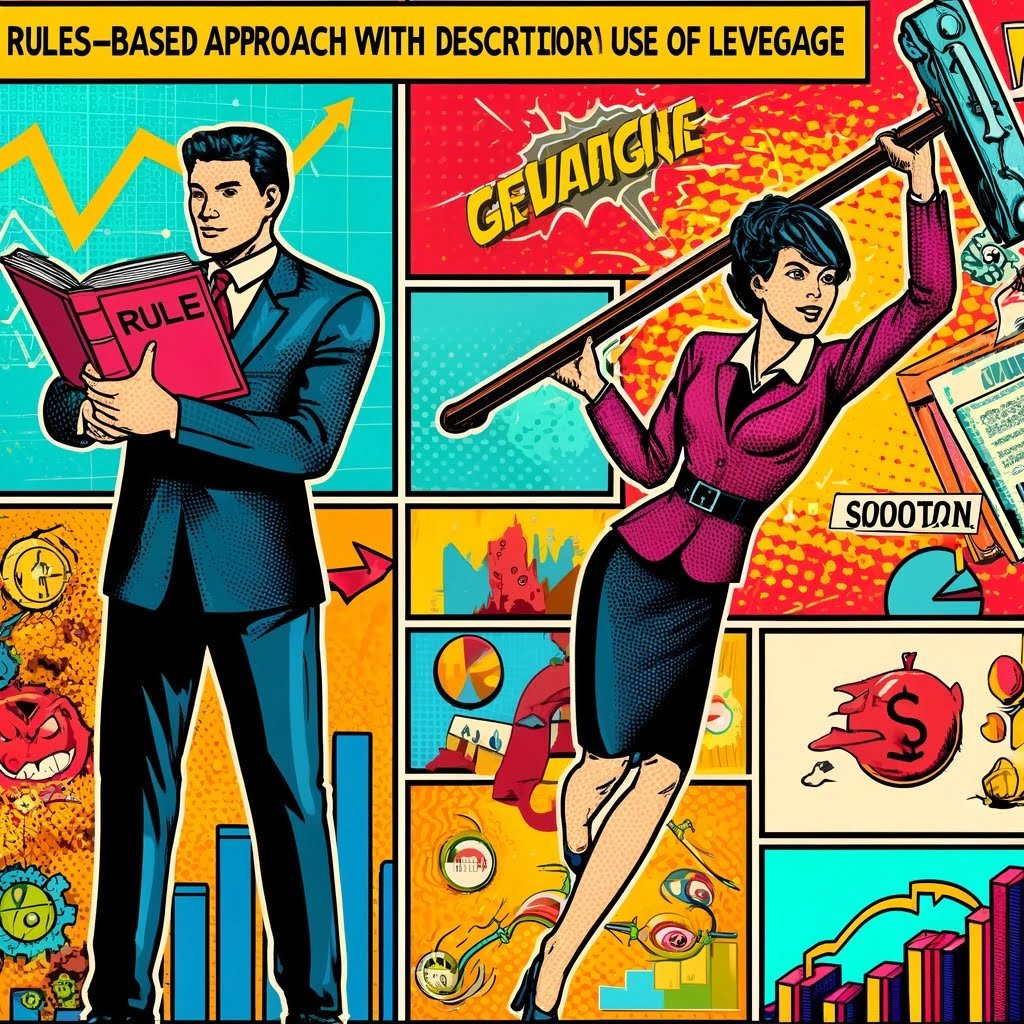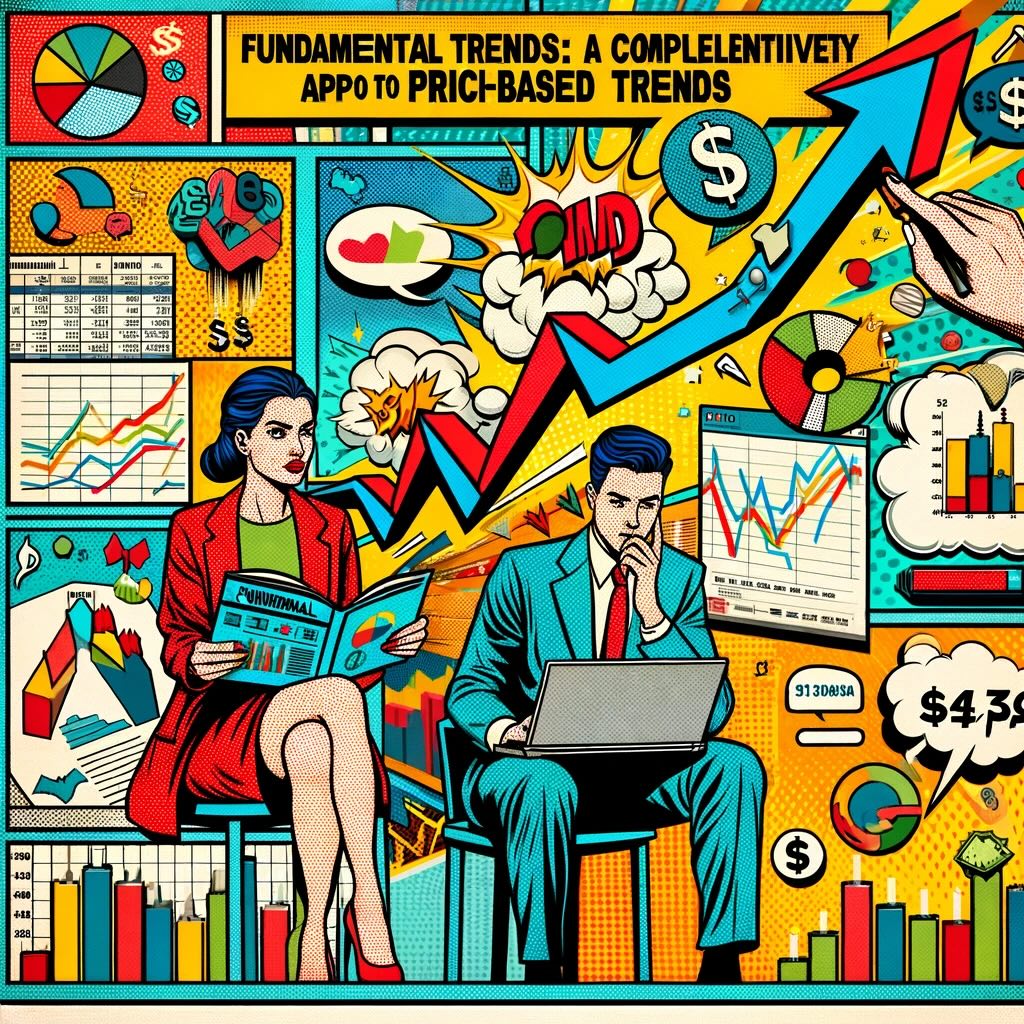When it comes to investing, there’s certainly no shortage of strategies to choose from.
Fear, greed, and everything in between can cloud judgment and lead to poor decisions.
Systematic strategies strip away the emotion, relying on cold, hard data to make trades.
It’s a Spock-like approach that never gets rattled, no matter what the market throws at it.

With this in mind, I’m thrilled to welcome Kevin C Maki, PhD to the “How I Invest” series.
His rules-based investment models have combined trend and momentum along with mean reversion strategies.
Without further ado, let’s turn things over to Kevin to find out more.

Systematic QV/MT Portfolio: How I Invest with Kevin C Maki, PhD
Hey guys! Here is the part where I mention I’m a travel content creator! This “How I Invest” interview is entirely for entertainment purposes only. There could be considerable errors in the data I gathered. This is not financial advice. Do your own due diligence and research. Consult with a financial advisor.
These asset allocation ideas and model portfolios presented herein are purely for entertainment purposes only. This is NOT investment advice. These models are hypothetical and are intended to provide general information about potential ways to organize a portfolio based on theoretical scenarios and assumptions. They do not take into account the investment objectives, financial situation/goals, risk tolerance and/or specific needs of any particular individual.

Meet Kevin C Maki, PhD – Systematic Investor/Trader
Kevin C Maki (KCM)
@SystematicIRE
Systematic Investment Research & Education
As a teenager and into my 20s I worked for small business owners and learned a lot about entrepreneurship from those experiences, particularly from working in a family-owned hotel for 10 years. During the time I worked there, the hotel grew from <100 rooms to >400, and the owners became quite wealthy.
I was also very interested in health/disease prevention and studied human physiology, nutrition science, and epidemiology (applied medical statistics), finishing a PhD in epidemiology in 1998. I worked as a scientist in the Department of Veterans Affairs for five years, followed by a stint running a business unit for a private research company, then co-founding and managing two private research firms that were sold in 2011 and 2021, respectively. These companies mainly worked on the design and execution of clinical studies to test food and pharmaceutical products.
Throughout my career, I was always saving/investing at least 15% of my gross income. I started as a value investor and studied Warren Buffett, Charlie Munger, Ben Graham, Bill Miller, etc. Eventually, like Buffett and Munger, I gravitated toward buying high quality companies that I thought could compound over decades. During bear markets, I would sell shares on which I had losses and upgrade to higher quality companies that had become less expensive. About 50% of my portfolio is in quality/value, i.e., high quality companies that I have tried to purchase at attractive prices. My main criteria for quality include high rates of return on invested capital over an extended period, a strong balance sheet, management with skin in the game (significant stock ownership), and shareholder friendly actions such as buybacks at reasonable prices.
During the last 20 years or so, I have become interested in rules-based investment models. The models I have developed and tested primarily combine trend and momentum, although a small portion of my trading also includes mean reversion strategies. Most of my rules-based trading (trend and momentum strategies) would be described as position trading where I am holding for at least several weeks, and preferably months, or even years, if the trend continues. These strategies are applied using both ETFs and individual equities.

From Value Investing To Systematic Trend
Who were your greatest influences as an investor when you first started to get passionate about the subject? How have your views evolved over the years to where you currently stand? If you had to recommend a handful of resources (books, podcasts, white papers, etc) to bring others up to speed with your investing worldview what would you recommend?
Initially, my focus was on value investing, although I have shifted to a style that is more buying high quality compounders that I hold for years. This approach is tax efficient. Later, I became interested in systematic trend and momentum strategies, and to a lesser degree, shorter term, mean reversion strategies.
Below are some recommended authors/books and podcasts. I will list my favorite authors in alphabetical order by last name with one book title, although many have published multiple books that are worth reading. Also, note that some of the books listed have multiple authors but only one is shown. Podcasts are listed alphabetically by show name.

Authors/Books
Gary Antonacci – Dual Momentum Investing
Tom Basso – The All-Weather Trader
Louise Bedford – Trading Secrets
Tobias Carlisle – The Acquirer’s Multiple
Robert Carver – Advanced Futures Trading Strategies
Andreas Clenow – Stocks on the Move
Larry Connors – Buy the Fear, Sell the Greed
Michael Covel – Trend Following
Ned Davis – Being Right or Making Money
Michael Dever – Exploiting the Myths
Mebane Faber – The Ivy Portfolio
Curtis Faith – The Way of the Turtle
Steven Goldstein – Mastering the Mental Game of Trading
Wes Gray – Quantitative Momentum
William Greene – Richer, Wiser, Happier
Robert Hagstrom – The Warren Buffett Way
Antii Ilmanen – Investing Amid Low Expected Returns
Katy Kaminsky – Trend Following with Managed Futures
Peter Lynch – One Up on Wall Street
James O’Shaughnessy – What Works on Wall Street
Brent Penfold – The Universal Tactics of Successful Trend Trading
Fred Piard – Quantitative Investing
Nick Radge – Unholy Grails
Jack Schwager – Market Wizards
Jeremy Siegel – Stocks for the Long Run
Larry Swedroe – Your Complete Guide to Factor Based Investing
Edward O. Thorp – A Man for All Markets
Stan Weinstein – Secrets for Profiting in Bull and Bear Markets
Larry Williams – Long-Term Secrets to Short-Term Trading
Mark Zweig – Winning on Wall Street

Podcasts
The Acquirer’s Podcast/Value After Hours – Tobias Carlisle, Bill Brewster, Jake Taylor
The Algorithmic Advantage – Richard Brennan, Simon Mansell
The Alpha Mind – Steven Goldstein, Mark Randall
Better System Trader – Andrew Swanscott
Excess Returns – Jack Forehand, Justin Carbonneau
The Meb Faber Show – Mebane Faber
Flirting with Models – Corey Hoffstein
The Investor’s Podcast – Stig Broderson, William Greene, et al.
ReSolve Riffs – ReSolve Asset Management
Stansberry Investor Hour – Dan Ferris, Corey McLaughlin
Top Traders Unplugged – Niels Kaastrup Larsen and others
Trend Following – Michael Covel

Role Models: Doing Well While Doing Good
Aside from investing influences, what real life events have molded your overall views as an investor? Was it something to do with the way you grew up? Taking on too much risk (or not enough) early on in your journey/career as an investor? Or just any other life event or personality trait/characteristic that you feel has uniquely shaped the way you currently view yourself as an investor. Education. Travel. Work Experience. Volunteering. A major life event. What has helped shape the type of investor you’ve become today?
The main influence that affected me as an investor and impacted my view of risk was working for successful entrepreneurs. I worked in a restaurant as a teenager, then in a family-owned hotel. As a scientist, I joined a private research company founded by a cardiologist who has since gone on to start and/or act as CEO of three pharmaceutical companies. All of these entrepreneurs were great role models for me, both as an entrepreneur myself, and as an investor. Also, they were models (particularly the cardiologist) for the ideal expressed by Ben Franklin of “doing well while doing good.”
Another important influence has been studying professional gamblers who make a living playing poker, sports betting, horse race handicapping, or playing video poker. All of those are games at which the player can get an edge against the house or other players. I earned a portion of my living for a short time as a card counter in Las Vegas. Those experiences studying gamblers and playing were very helpful later because they taught me about variance, drawdowns, bet sizing, and exploiting a statistical edge. Edward O. Thorp, Bill Gross, and Warren Buffett were all attracted to advantage play in casinos or racetracks early in their lives.

Understanding The Drivers Of Success/Profits In Any Investment Endeavour
Imagine you could have a three-hour conversation with your younger self. What would you tell the younger version of yourself in order to become a better investor? Something that you know now that you wish you knew back then.
My wife and I ran a rental property business, mainly in the Chicago area, for about 20 years. One key driver of residential real estate prices is population growth. Investing in real estate in an area with low or no population growth creates a headwind. Investing where the population is growing creates a tailwind. Our real estate investments outside of Illinois all did much better than those in Illinois. I wish I had appreciated the value of population patterns for residential real estate investing sooner. There is a book and website called How Money Walks, which shows how adjusted gross income is shifting geographically based on IRS data. That would be my first stop now regarding any area in which I would consider a real estate investment. The broader lesson here is that it is important to understand the drivers of success/profits in any investment endeavor. Learning them in advance of investing is far preferable. Charlie Munger used to quote Roy Rogers who said: “There are three kinds of men: the one who learns by reading, the few who learn by observation, and the rest of them who have to pee on an electric fence for themselves.” I prefer to avoid the third category!

QV/MT Portfolio: Quality Equities + Momentum & Trend Strategies
Let’s pop open the hood of your portfolio. What kind of goodies do we have inside to showcase? Spill the beans. How much do you have of this? Why did you decide to add a bit of that? If you’d like to go over every line-item you can or if it would be easier to break your portfolio into categories or quadrants that’s another route worth considering. When do you anticipate this portfolio performing at its best? And at its worst?
I describe my portfolio as QV/MT because it is roughly 50% high quality equities that have been purchased at prices that I felt were attractive, usually during bear markets. This segment also includes some funds that invest using quality and value-based methods that I believe will outperform over time. With rare exceptions, these are long-term holds where I hope to allow capital to compound over many years.
The other half of the portfolio is mainly momentum and trend strategies that are designed to avoid large drawdowns and capture medium and longer trends. I employ several strategies that have all been back tested. I also look for ways to test my strategies out-of-sample whenever possible. For example, I may develop a strategy using ETFs that I then test on similar mutual funds that have been in existence longer. This allows me to have out of sample testing both from the standpoint of demonstrating that the strategy works on a similar but distinct group of assets, and that it would have worked during a period preceding the dataset on which the strategy was developed. I diversify across asset classes (equities, commodities, fixed income, currencies), countries, systems, and timeframes. I also invest in some CTAs and ETFs that utilize strategies different from my own that I believe will be complementary, and which would be too time consuming for me to employ.
The underlying idea is that certain asset classes will do best during specific economic conditions. This is based on concepts like the permanent portfolio developed by Harry Browne and used by others such as Ray Dalio (All Weather) and Darius Dale (42Macro), with assets that are selected based on how they have historically performed in different economic conditions categorized on the basis of inflation and economic growth. Browne’s permanent portfolio is a strategic allocation that is fixed and rebalanced periodically. I utilize a tactical approach that shifts allocations based on trend and momentum, also known as time series and cross-sectional momentum.

Patience + Discipline = Investing Success
What kind of investing skills (trading, asset allocation, investor psychology, etc.) are necessary to become good at the style of investing you’re pursuing? Is there a certain type of knowledge, experience and/or personality trait that gives one an advantage running this type of portfolio?
In my view, patience and discipline are the main characteristics that contribute to trading and investing success. These are not traits that come naturally to most people, and certainly did not for me. They require training and practice with feedback. When I was playing blackjack as an advantage player, I found that it was difficult to just do what I was supposed to, based on the math which I had confirmed with millions of hands of computer simulation. When I was winning, I wanted to cut my bet size to avoid giving back profits. When I was losing, I wanted to cut my bet size to staunch the losses. I had to train myself to just stick with proper bet sizing to maximize my long-term profits. This training has been extremely helpful to me as a trader and investor. This means waiting for the set-up that has been back tested, not selling early (letting profits run) and taking losses when my rules tell me to do so rather than waiting and hoping. For my long-term compounders, I need to have the patience to wait until they are at a sufficient discount to my estimate of intrinsic value. I have not been perfect, but I have mainly been successful at following the rules that I have developed based on back testing.

Rules-Based Approach With Discretionary Use Of Leverage
What would be a toned-down version of your portfolio? Something that’s a bit watered down. Conversely, what would be a more aggressive version of your portfolio, if someone were willing to take on more risk for a potentially greater reward?
On the trading side, the main difference would be use of leverage, either directly or with leveraged ETFs. Leverage is like the accelerator on a car. Applying it may help you get to your destination sooner, but excessive use can be dangerous. My favorite trades are those for a company or industry where the fundamentals are good, but it is out of favor and cheap. I wait until the trend turns positive, then invest. This happened a few years ago with the energy sector. This group had declined from about 12% of the S&P500 market capitalization to 2%. Cash flow was high, and companies were paying down debt and buying back shares instead of investing to develop new capacity. To me, this looked like a once in a generation opportunity. I waited for the trend to turn positive and then bought with leverage. This was an example of following my rules-based approach with discretionary use of leverage because I perceived the upside to be much greater than the downside risk.

Investing Edge: Training In Statistics
What do you feel is your greatest strength as an investor? What is something that sets you apart from others? Conversely, what is your greatest weakness? Are you currently trying to address this weakness, prevent it from easily manifesting or simply doubling down on what it is that you’re great at?
My greatest strength, or perhaps advantage, is that I have training in statistics. I don’t believe that I have any edge as a fundamental analyst. There are thousands of MBAs and Wall Street professionals that can do a better job than me with discounted cash flow models, and who will read footnotes in annual reports. I don’t try to compete with them. I do have an edge regarding my understanding of statistical concepts, the hazards of overreliance on back tests, overfitting, understanding confidence intervals, covariance, etc.
My main weakness seems to be optimism. I can be easily convinced by a good narrative. I usually believe that things are going to work out. Overall, this is a favorable trait that has served me well, but it can be a disadvantage for a discretionary investor or trader. Part of the reason that I have gravitated to rules-based methods is that this prevents me from getting overly enthusiastic about a narrative and investing without fully understanding the potential downside.

Evidence Based Investing: Allocation To Trend Following
What’s something that you believe as an investor that is not widely agreed upon by the investing community at large? On the other hand, what is a commonly held investing belief that most in the industry would agree with that rubs you a bit differently?
I try to be evidence based in my investing and trading behavior. The results from every back test and simulation I have seen suggest that a substantial allocation to trend following with managed futures improves portfolio performance (risk-adjusted return). Most such funds are systematic, adaptive, globally diversified, and include both long and short trades covering equities (usually indices), fixed income, commodities, and currencies. Yet, the most common allocation to this strategy is 0%. I have talked with financial advisors who were not even aware of managed futures trend following strategies. Today, there are several ETF options available at a reasonable cost that provide exposure to managed futures trend strategies. It is surprising that financial industry professionals have not shown greater interest in this approach.

Fundamental Trends: A Complementary Approach To Price-Based Trend
What’s a subject area in investing that you’re eager to learn more about? And why? If you knew more about that particular topic would it influence the way you’d construct your portfolio?
The folks at AQR (Cliff Assness et al.) have incorporated fundamental trends into their trend following as a complementary approach to price-based trend. Robert Novy-Marx pioneered research in this area and his work has been extended by the AQR team. This is a concept that interests me and that I would like to operationalize in my own portfolio.

An Approach That Does Not Rely On The Future Being Similar To The Recent Past
What would be the ultimate anti-Kevin portfolio? Something you’d never own unless you were duct-taped to a chair as a hostage? What about this portfolio is repulsive to you? Conversely, if you were forced to Steel Man it, what would potentially be appealing about the portfolio to others? Why is it so alluring?
The traditional 60/40 stock/bond portfolio is widely used and is not for me. For years, longer maturity bonds offered “return-free risk” because interest rates were very low and manipulated by monetary policies. Currently, shorter term bonds offer a higher expected return than they have for years, so I am less averse to having some bond allocation now than a few years ago. However, the diversifying effect of bonds is reduced when annual inflation is above about 3% based on the Consumer Price Index. Below 3%, the correlation between stock and bond returns tends to be inverse, but above 3%, it tends to be positive. This creates a situation like that which occurred in 2022 where stocks and bonds declined at the same time. The 60/40 portfolio is appealing to many because it has worked well since the early 80s when bond yields started to drop. A fixed bond allocation was diversifying, with bonds performing well during equity bear markets (e.g., during 2008-2009). What has worked recently tends to be popular. I prefer an approach that does not rely on the future being similar to the recent past. Therefore, I use trend following funds to get both long and short exposure to bonds and other asset classes. These adapt systematically to changing economic conditions and have historically outperformed the aggregate bond index with about half the maximum drawdown of equity indices.

Connect With Kevin C Maki, PhD
Thank you for the invitation to share my thoughts! The best way for people to connect with me is through X (formerly Twitter) @SystematicIRE or on LinkedIn (Kevin C Maki, PhD). My X activity is mostly devoted to investing and trading, while my LinkedIn presence relates primarily to my health-related research and educational endeavors.

Nomadic Samuel Final Thoughts
I want to personally thank Kevin for taking the time to participate in the “How I Invest” series by contributing thoughtful answers to all of the questions!
If you’ve read this article and would like to be a part of the interview series feel free to reach out to nomadicsamuel at gmail dot com.
That’s all I’ve got!
Ciao for now!
Important Information
Investment Disclaimer: The content provided here is for informational purposes only and does not constitute financial, investment, tax or professional advice. Investments carry risks and are not guaranteed; errors in data may occur. Past performance, including backtest results, does not guarantee future outcomes. Please note that indexes are benchmarks and not directly investable. All examples are purely hypothetical. Do your own due diligence. You should conduct your own research and consult a professional advisor before making investment decisions.
“Picture Perfect Portfolios” does not endorse or guarantee the accuracy of the information in this post and is not responsible for any financial losses or damages incurred from relying on this information. Investing involves the risk of loss and is not suitable for all investors. When it comes to capital efficiency, using leverage (or leveraged products) in investing amplifies both potential gains and losses, making it possible to lose more than your initial investment. It involves higher risk and costs, including possible margin calls and interest expenses, which can adversely affect your financial condition. The views and opinions expressed in this post are solely those of the author and do not necessarily reflect the official policy or position of anyone else. You can read my complete disclaimer here.





